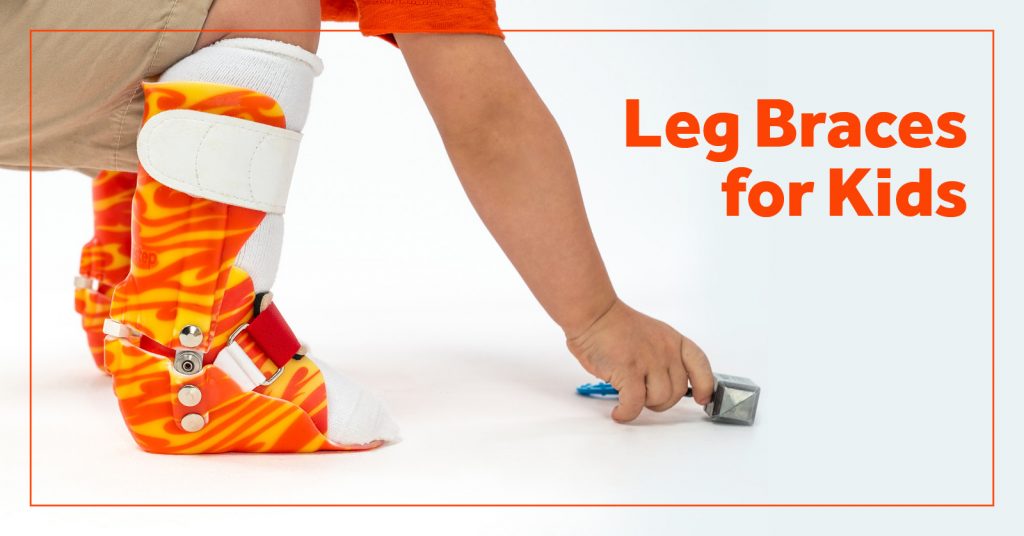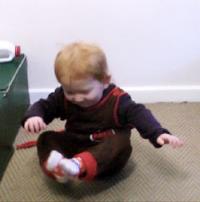hypermobility in babies ankles
It affects 7 10 of school age children in the UK. HMS is a dominant inherited connective tissue disorder described as generalized articular.

How Hypermobility And Low Muscle Tone Affect Your Baby S Development Skills For Action
It is well recognized that many if not most children and adolescents attending paediatric rheumatology clinics will have a non-inflammatory origin for their complaints or disorder.

. It is extremely common in children having being reported in 25 to 50 of those younger than 10 years of age. As children with hypermobile joints require added support around the heel and ankle the shoes should have a. Children who have hypermobility disorder might experience it in one or more joints and might say they have loose joints or describe.
Over time pain can become an issue. Many children with joint hypermobility low muscle tone have problems with flat feet. Bend a thumb backwards to touch your forearm.
Hypermobility in the joints of the feet and ankles may cause the feet to roll in giving an excessively flat-footed appearance. However some children have a condition called Joint Hypermobility Syndrome or JHS. The functional orthoses most widely recommended combine three key characteristics.
Placing flat hands on the floor with straight legs. Generalised joint hypermobility and flat feet. But when hypermobility causes pain it.
As children with hypermobile joints require added support around the heel and ankle the shoes should have a closed solid and ideally high heel cap. 651-325-2200 Pediatric Expert Consult More Ways to Contact Us. The hypermobility syndromeHMS was first described in 1967 by Kirk et al as the occurrence of musculoskeletal symptoms in hypermobile healthy persons1.
While standing put hands flat on floor while knees stay straight. Mechanical causes are frequently identified and hypermobility or ligamentous laxity of joints is increasingly recognized as an aetiological factor in the. You can also observe the bone below the ankle drop towards the ground.
The inside border of the foot does not have a good arch and the heel bone is often angled outwards. HSDs are the diagnosis where the main or only symptoms are exercise-related pain together with joint hypermobility. In infants with joint hypermobility the connective tissue that holds the muscles together and connects the muscles to the bones via the tendons is very pliable.
This happens when the connective tissue which makes up the joint structures capsule and. 53 girls and 47 boys mean age 11531yrs with a mean Beighton score of 679 and LLAS of 8212 were recruited. Of these 100 children 94 met the Brighton criteria for Joint Hypermobility Syndrome and 90 met the Villefranche criteria for Ehlers-Danlos Syndrome-Hypermobility Type Of the entire cohort 50 reported experiencing ankle joint pain and 13.
Benign hypermobility describes a child that has several joints that are more flexible than usual. Of these 100 children 94 met the Brighton criteria for Joint Hypermobility Syndrome and 90 met the Villefranche criteria for Ehlers-Danlos Syndrome-Hypermobility Type Of the entire cohort 50 reported experiencing ankle joint pain and 13. A heel cup and 3.
The term benign hypermobility joint syndrome BHJS is a common source of joint or muscle complaints that often cause concern for parents children and school personnel. One way to check if the heel cap is solid is by pressing your thumb against the back of the shoe approximately 1 cm above the sole. For most children hypermobility affects just the joints.
This happens when the connective tissue which makes up the joint structures capsule and ligaments is more compliant easier to stretch than usual. When you have joint hypermobility it means your joints are more flexible than in other people. Joint instability and injury is more common in people with joint hypermobility.
If you watch these closely when the patient steps off the orthotics you can see that the angle between the lines changes as the foot returns to its unsupported state. If you cannot make a dent with your thumb the shoe has a solid. One or more wedges to influence joint positions.
Foot shape in some children with OI changes following fractures or due to bowing of leg bones. The increased range of movement at the joints sometimes called joint laxity or being double jointed is due to differences in the connective tissue that forms the joint capsule and ligaments. Frequent tripping or falling.
Joint hypermobility and musculoskeletal injury. The knee ankle and shoulder are the most commonly affected joints in children. This is an advantage to some children and tends to be associated with being good at sport.
Left knee bending backward. In addition children with flat feet often stand with their feet turned out and sometimes with the feet far apart. Meanwhile other names are given to HMS such as joint hypermobility syndrome and benign hypermobility joint syndrome.
Bend a little finger back more than 90 degrees. As children with hypermobile joints require added support around the heel and ankle the shoes should have a closed solid and ideally high heel cap. Hypermobility can be a common source of joint or muscle complaints causing fatigue pain and.
Infants with joint hypermobility have joints that are able to bend further than usual and a trunk and limbs that appear to be floppy and weak. Most people with hypermobility will not find a genetic cause but early identification means that steps can be taken to minimise injury. Joint hypermobility in babies and children is even more common and usually causes no problems.
4 points and pain in 4 or more joints for at least 3 months joint hypermobility syndrome likely. Infants with joint hypermobility have joints that are able to bend further than usual and a trunk and limbs that appear to be floppy and weak. Hypermobility in the joints of the feet and ankles may cause the feet to roll in giving an excessively flat-footed appearance.
Some people with hypermobile foot or ankle joints will benefit from the functional control provided by foot orthoses although they are not a panacea for all foot problems. The increased range of movement at the joints sometimes called joint laxity or being double jointed is due to differences in the connective tissue that forms the joint capsule and ligaments. Right elbow bending backward.
The Beighton score is measured by adding 1 point for each of the following. Hypermobility syndrome HMS is diagnosed using the Beighton score and Brighton criteria. For most children hypermobility affects just the joints.
Hypermobile joints are less stable which can lead to increased sprains trips and falls. Foot and ankle complaints are common in people with hypermobility. In infants with joint hypermobility the connective tissue that holds the muscles together and connects the muscles to the bones via the tendons is very pliable.
651-290-8707 Refer a Patient. 4 points hypermobility likely. Pronation is very common in the hypermobile body and can cause foot leg and lumbar spine pain.
Joint hypermobility without pain occurs when children have stretchy or flexible joints but without exercise-related pain. It is sometimes referred to as being double jointed and is quite common about 1 in 10 people are hypermobile. Right knee bending backward.
Braces for the older child involved in sport soft braces to protect knees or ankles are sometimes recommended. Hypermobility refers to an increased range of movement in multiple joints for their age. Hypermobility means a persons joints move beyond a normal range of motion.
A contoured shell 2. In addition to hypermobile joints a child with JHS may also have. The older you are the less likely it is you will be hypermobile.
Left elbow bending backward.
Physiotherapy For Children Provided By Kidsphysio In Milton Keynes Bedford Flitwick Ampthill Hypermobility

Joint Hypermobility In Babies And Children Emma S Diary

Find Out If Your Child Has Flat Feet Follow These 3 Simple Steps Fitting Children S Shoes

Steps Charity Worldwide How Healthy Are Your Baby S Hips Please Share 5 Way To Check Your Babies Hips Dislocated Hips Are Not Visible Or Painful And Can Go Undiagnosed Early Detection
All About Out Toeing First Step Pediatric Therapy

Hypermobility In Children The Real Deal Youtube

What Is Hypermobility In Babies Children Young Adults Therapy Stars

How Hypermobility And Low Muscle Tone Affect Your Baby S Development Skills For Action

Leg Braces For Kids How They Can Help Your Child Thrive Surestep

How To Recognise Joint Hypermobility In Your Child My Strong Little Body

Hypermobility Syndrome Therapies For Kids

How Hypermobility And Low Muscle Tone Affect Your Baby S Development Skills For Action

How Hypermobility And Low Muscle Tone Affect Your Infant S Development Low Muscle Tone Pediatric Physical Therapy Baby Development

Understanding Hypotonia Lower Extremity Review Magazine

My Child Is Very Flexible Is This Normal Sole Motion Podiatry

Baby Shoes For Wide Feet The Best Shoes For A Baby With Wide Or Extra Wide Feet Fitting Children S Shoes

What Is Hypermobility In Babies Children Young Adults Therapy Stars

How Hypermobility And Low Muscle Tone Affect Your Baby S Development Skills For Action
